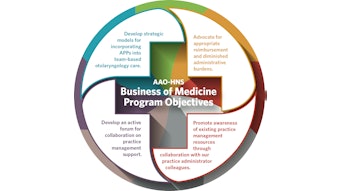From the Education Committees | Sublingual Immunotherapy: Is One Pill All I Need?
Allergic rhinitis is a highly prevalent disease in the United States population affecting between 10% and 30% of the general population.
Christopher D. Brook, MD

Sublingual immunotherapy (SLIT) is available in two forms: sublingual drops, which are made from allergen extracts traditionally used for subcutaneous immunotherapy; and sublingual tablets, produced specifically for intraoral use. Allergen extracts are not FDA approved for oral usage and are considered an off-label use of the extracts. SLIT tablets are FDA approved for sublingual usage and not considered off-label.
There are currently four sublingual allergen extract tablets that are FDA approved and on the market. Grasstek (ALK-Abello) and Oralair (Stallergenes) are both indicated for seasonal grass allergies. Grasstek contains Timothy grass extract, while Oralair is a combination of several different prevalent grass allergens. Both tablets can be used pre-seasonally and continued through the allergy season for relief from seasonal grass allergy. Ragwitek (ALK-Abello) is a ragweed extract tablet indicated for seasonal ragweed allergies and can similarly be used pre-seasonally and continued through the allergy season. The final FDA-approved SLIT tablet is Odactra (ALK-Abello), which is intended for year-round usage and is a combination of house dust mite extracts for Dermatophagoides pteronyssinus and farinae, the two most prevalent dust mite species in the U.S. Contraindications for all tablets include severe/uncontrolled asthma, systemic hypersensitivity reactions, or a history of eosinophilic esophagitis. All manufacturers recommend a prescription and teaching of an epinephrine autoinjector to patients being prescribed sublingual tablets.3
SLIT drops are made by compounding allergen extracts into a patient-specific formulation based on specific allergy testing. Numerous extracts are available for purchase to use in testing and vial compounding. SLIT drops, although not FDA approved, have a strong track record of safety and are generally considered significantly less likely to generate a systemic reaction than subcutaneous immunotherapy because of the low rate or systemic reactions and the fact no fatalities have been reported with use.4
When comparing SLIT tablets and SLIT drops there are several pros and cons for each treatment method. SLIT tablets are standardized, generally covered by payors because of FDA approval, and convenient because they do not require compounding. There are two major downsides to tablets—they are limited to single antigens (or classes of antigens in the case of Oralair) and there are a very limited number of antigens available for treatment. SLIT drops have several downsides including that they can use standardized or non-standardized extracts and consequently can contain variable amounts of antigenic material. Compounding SLIT also requires a USP 797 compliant area to perform extract compounding, requires on-hand supply of allergen extras—which can be very costly— and expertise in prescribing and compounding of extracts. SLIT drops do have some significant advantages in that they provide a much wider range of antigens with which to provide desensitization and can be combined in a single vial to provide desensitization to numerous antigens at the same time. Regardless of the method chosen, however, SLIT has been shown to be an effective treatment for allergic rhinitis and broadens the treatment options available to the otolaryngic allergist.
The debate on the optimal number of antigens to be used in immunotherapy is a subject for another article.
References
1. World Health Organization. White Book on Allergy 2011-2012 Executive Summary. Eds: Pawankar, Canonica, Holgate, Lockey
2. Boulet L et al. Comparative degree and type of sensitization to common indoor and outdoor allergens in subjects with allergic rhinitis and/or asthma. Clin Exp Allergy 1997;27:525-9
3. https://www.fda.gov/vaccines-blood-biologics/allergenics/allergen-extract-sublingual-tablets
4. Tankersley M, Han JK, Nolte H. Clinical aspects of sublingual immunotherapy tablets and drops. Ann Allergy Asthma Immunol. 2020 Jun;124(6):573-582. doi: 10.1016/j.anai.2019.12.025. Epub 2020 Jan 7. PMID: 31923544.































